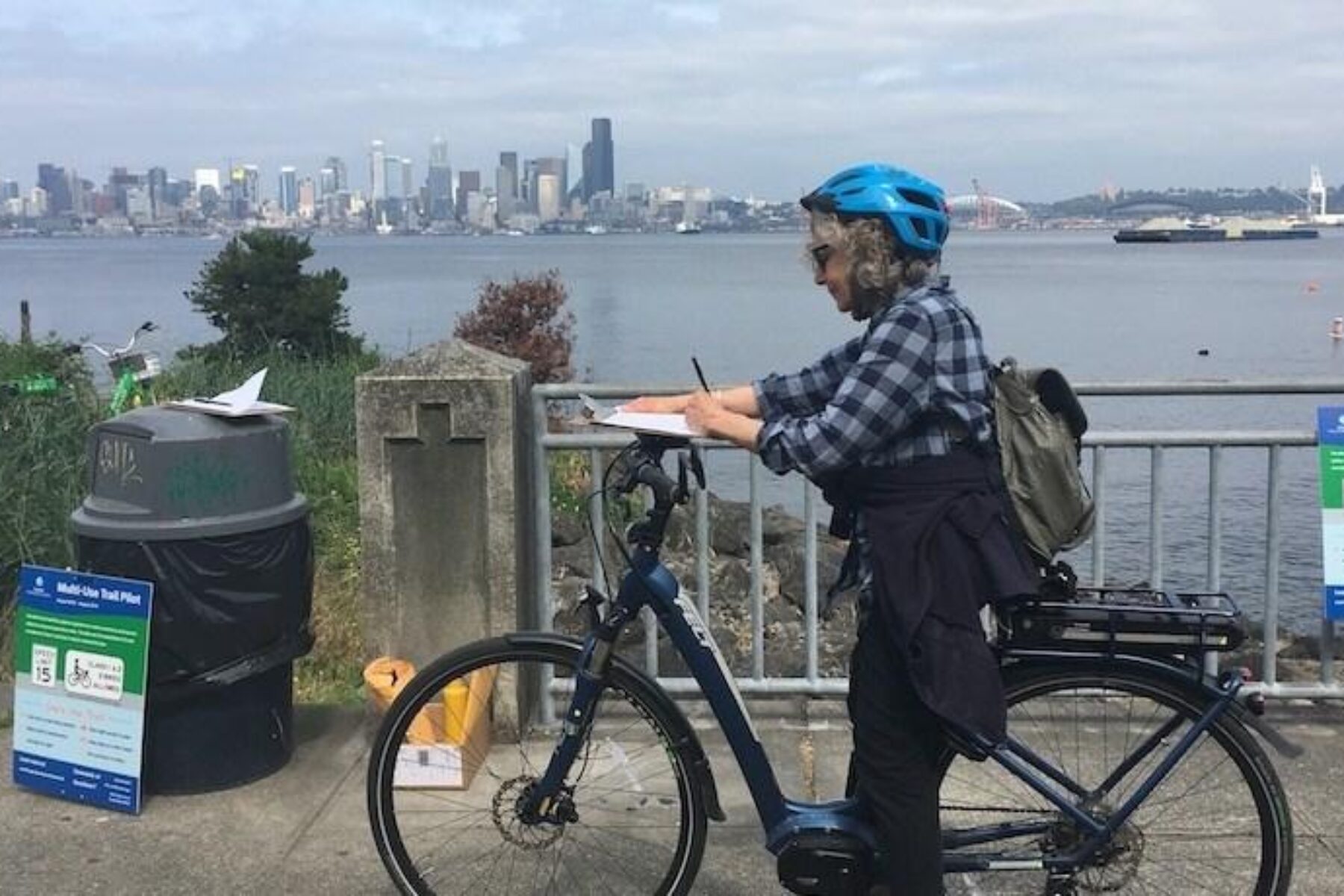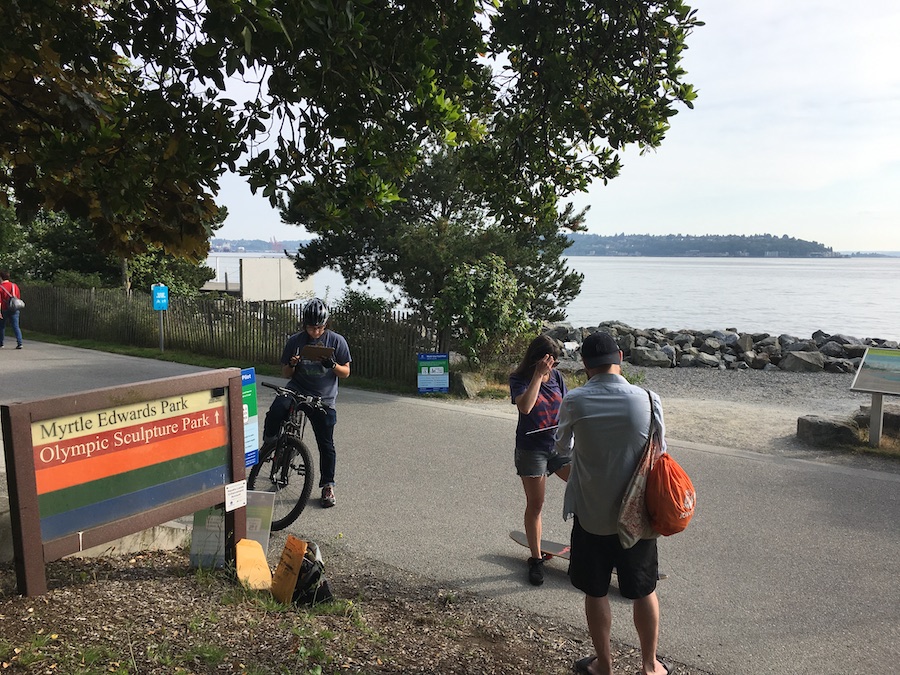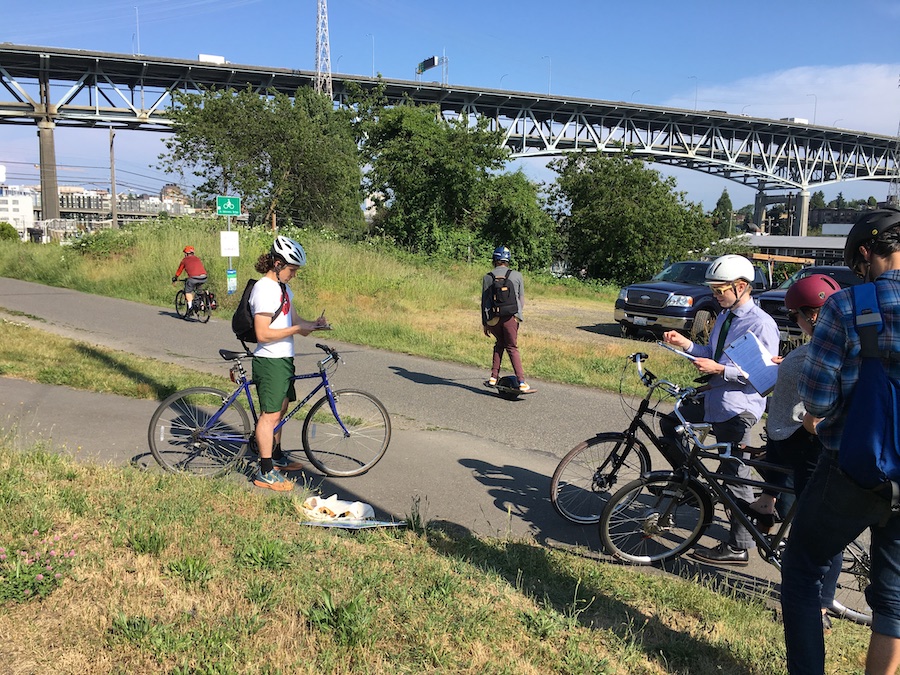Seattle E-Bike Pilot Program Promotes Safe Shared Use on Local Trails

Like other cutting-edge West Coast cities, Seattle often sees the first waves of new technology, and recently, that tech has made its way onto the city’s trails in the form of e-bikes, e-scooters, hoverboards, solo wheels and more. Micromobility devices like these feature a small electric motor the rider can engage for a boost when needed, and in Seattle and many other urban areas, e-bike and e-scooter sharing programs provide convenient alternative-transportation options.
Naturally, owners and renters of these devices take to rail-trails for commuting and recreation. While these innovative devices open up significant opportunities for riders, particularly those with health and mobility issues, some trail users have expressed concerns about this new equipment, especially in regard to speed, and communities nationwide have begun figuring out how to best integrate their reasonable operation on public trails while keeping in mind the safety of all trail users.
Related: E-Bikes Got This Baby Boomer Back on the Trail After Asthma
After Washington passed a statewide law in March 2018 concerning e-bikes on trails, Seattle Parks and Recreation (SPR) decided to forestall potential conflicts by establishing a program that would align with the state legislation and better explain the new guidelines to the public.

“Our goal was to create consistency and clarity of the regulations, and also to gather some data and do some outreach to understand what sort of policy change we should do as a collective going forward in the city,” said Todd Burley, SPR environment and sustainability strategic advisor.
The state law allowed Class I and II e-bikes (featuring power assist up to 20 mph and electric motors of 750 watts or less) on multiuse trails unless local governance precluded them. Seattle’s local laws prohibit motorized vehicles on shared trails, so SPR needed to take steps to clarify their policies in light of the new legislation. Beginning in August 2018, the department’s pilot program expressly allowed Class I and II e-bikes on city trails and created a 15 mph speed limit for all trail users. SPR staff also began observing trails to collect data on current e-bike usage, and they gathered feedback from community groups and individual trail users.

“Instead of going in with a heavy hand, [we wanted to] go in with an open ear,” Burley said.
Their data collection included observations of a number of unexpected devices, like electric unicycles, so SPR amended its final policy with language that would apply to all electric-assisted mobility devices, present and future. The department received overwhelming public support regarding the speed limit as well as the presence of e-bikes, so they implemented the adjusted pilot conditions as permanent guidelines for safe and fair trail use.
To help other agencies establish similar policies, Rails-to-Trails Conservancy (RTC) has worked with trail groups and lawmakers to develop model legislation that addresses these concerns. To date, variations of these recommended guidelines have passed in nearly half of states.
Resources for Best Practices
Rails-to-Trails Conservancy has developed criteria-driven guidance for e-bike and micromobility device use for trail planners, developers, managers and users.
Learn about micromobility and e-bikes
“We want trails to be for everyone, but there are limits to the sorts of devices that can amicably co-exist,” said Kevin Mills, RTC’s vice president of policy.
In the case of e-bikes, RTC concurs with SPR’s guidelines and recommends permitting Class I and II e-bikes but discouraging faster Class III e-bikes that can lead to more conflicts with other trail users.
“The key takeaway for me is that these are shared trails, and we need to create expectations and regulations that help people get along together,” said Burley. “As you step back and engage with more people, I think the path becomes a little more clear.”
This article was originally published in the Spring 2020 issue of Rails to Trails magazine. It has been reposted here in an edited format. Subscribe to read more articles about remarkable rail-trails and trail-networks while also supporting our work.

Donate
Everyone deserves access to safe ways to walk, bike, and be active outdoors.



